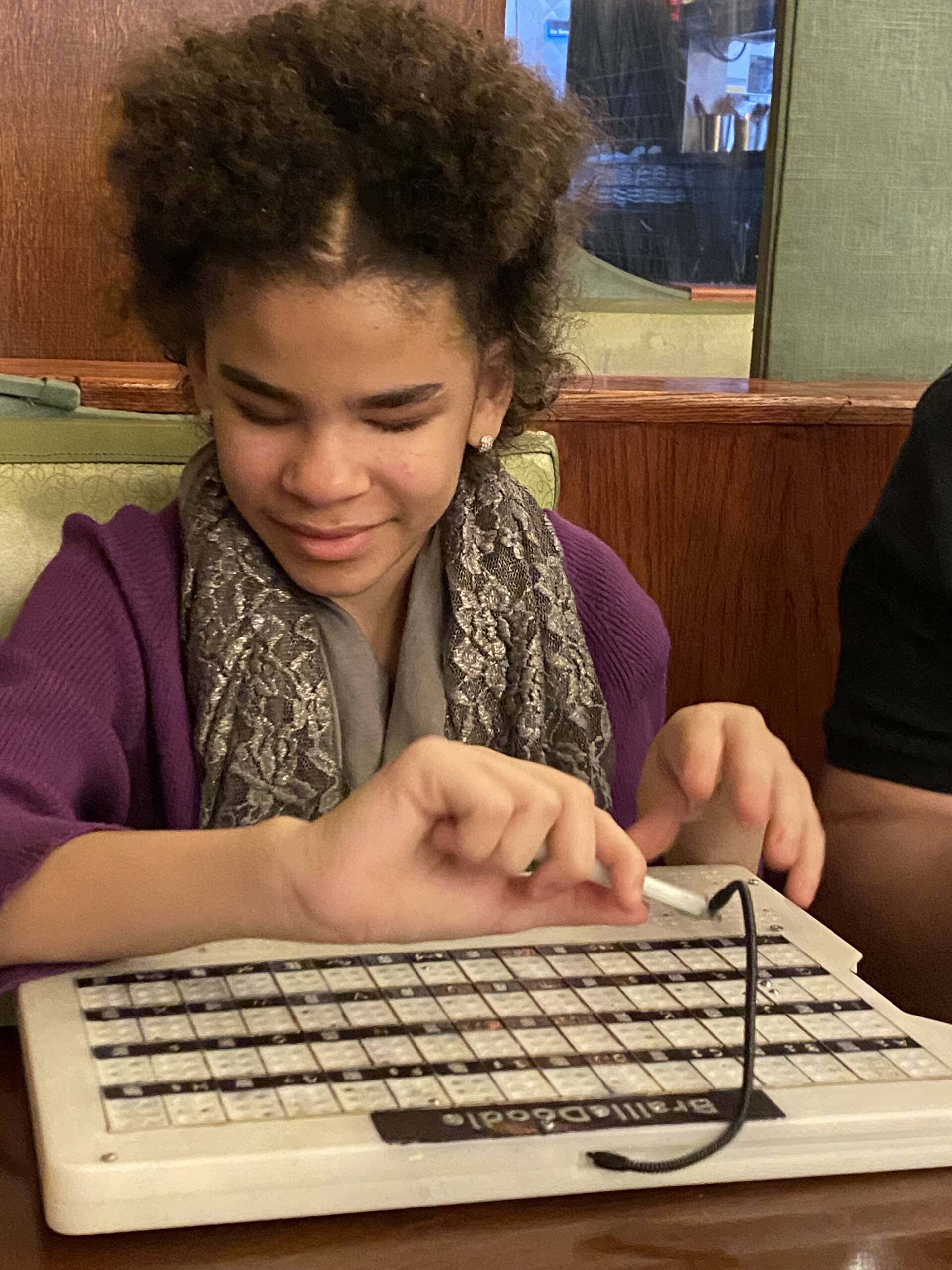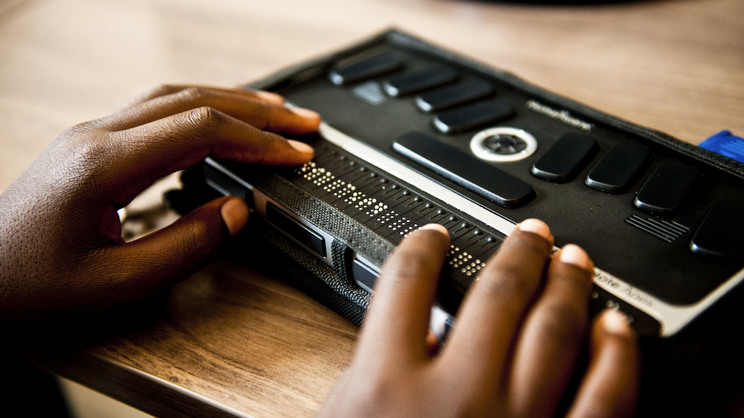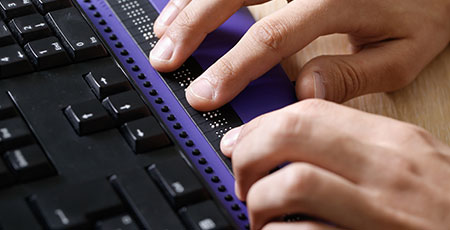Wearable Technology for Low Vision: Making Daily Life Easier
Wearable Technology for Low Vision: Making Daily Life Easier
Blog Article
Discover Ingenious Devices Developed for the Aesthetically Impaired
The advancement of ingenious tools for the aesthetically impaired represents a considerable advancement in ease of access and freedom. Technologies such as wise glasses with AI abilities and mobile applications designed to provide acoustic summaries are reshaping daily experiences for users.
Smart Glasses for Navigation

Smart glasses created for navigation are reinventing the method visually damaged people communicate with their atmosphere. These advanced devices use a mix of camera modern technology, man-made knowledge, and auditory feedback to supply real-time info regarding surroundings. By using challenge discovery systems, wise glasses can alert individuals to prospective risks, enabling much safer flexibility in both acquainted and strange settings.
The combination of GPS technology better improves navigation abilities, allowing individuals to obtain auditory instructions as they move. This hands-free approach not just fosters self-reliance however additionally empowers aesthetically damaged individuals to browse metropolitan landscapes with boosted self-confidence. Furthermore, numerous wise glasses are geared up with functions that identify sites and street signs, giving contextual info that improves the individual experience.
Furthermore, the growth of these tools is continuously advancing, with firms functioning to improve the accuracy of things recognition and broaden the variety of navigational attributes. As wise glasses end up being a lot more cost effective and obtainable, they hold the possible to considerably transform daily life for aesthetically impaired users. Inevitably, these cutting-edge devices stand for a critical step towards inclusivity, offering improved movement and a better sense of freedom for people navigating the globe around them.

Mobile Application for Daily Living
Exactly how can mobile applications boost the day-to-days live of aesthetically impaired individuals? Mobile applications are revolutionizing the means visually impaired individuals browse their settings, take care of everyday jobs, and accessibility information. These applications offer necessary assistance with different functionalities, fostering self-reliance and enhancing quality of life.
A number of ingenious mobile apps are developed specifically for daily living. Applications like Be My Eyes attach aesthetically impaired users with sighted volunteers by means of video clip phone calls, permitting them to get real-time aid with jobs such as reading labels or browsing unfamiliar areas. Seeing AI, established by Microsoft, uses artificial knowledge to describe surroundings, reviewed text, and identify objects, effectively changing a mobile phone right into a powerful device for everyday support.
Additionally, navigating apps customized for the visually impaired, such as Aira and BlindSquare, supply audio-based directions and ecological information, making it possible for users to traverse their surroundings safely and with confidence. Beyond navigation and instant aid, mobile apps also support organization and task management, with functions that help users set reminders, create order of business, and track appointments. In recap, mobile applications serve as indispensable sources, encouraging aesthetically damaged individuals to lead even more independent and fulfilling lives.
Wearable Technologies for Assistance
Empowerment with technology is significantly obvious in the realm of wearable tools developed to help visually damaged people. These innovative devices incorporate flawlessly right into life, enhancing navigation and giving essential comments to individuals. Wise glasses outfitted with electronic cameras can check out and identify faces text aloud, allowing customers to communicate more confidently in social and specialist setups.
One more significant advancement is the use of haptic comments systems in wearable devices. These systems make use weblink of vibrations or other tactile signals to convey info regarding the user's atmosphere, such as obstacles or modifications in surface, boosting wheelchair and security. Wearable technologies also consist of wristbands that connect to smartphones, alerting users to notices via refined vibrations, hence improving connectivity without reliance on aesthetic signs.
As these modern technologies continue to develop, they are not only enhancing self-reliance for visually damaged individuals but additionally fostering a greater sense of inclusion in society. By bridging the gap between difficulties dealt with in day-to-day living and the capacity for freedom, wearable modern technologies act as essential tools in the mission for equal rights and empowerment for those with aesthetic disabilities.
Audio Summary Tools
Audio summary tools play an important duty in enhancing ease of access for aesthetically damaged individuals, supplying them with the ability to involve with aesthetic media. Voice-activated assistive devices. These devices supply narrated descriptions of crucial aesthetic components in films, television programs, and live efficiencies, ensuring that customers can completely understand the context and feelings conveyed via visuals
Sound summary can be incorporated into different platforms, including streaming services, cinema screenings, and live theater. Many popular streaming services now include audio description as an ease of access attribute, permitting customers to select it easily. Along with traditional media, specialized apps additionally exist, supplying audio summaries for art exhibits, museums, and other social events.
The performance of audio description pivots on the skill of the storytellers, who should communicate aesthetic details succinctly without detracting from the original audio. Technologies in this field are also leading the way for even more personalized experiences, where individuals can change the level of information and pacing according to their preferences.
Braille Innovations and Devices
Braille gadgets and technologies have actually considerably transformed the method aesthetically impaired people interact with message and details. Modern advancements have actually see here now led to the advancement of versatile tools that boost literacy and self-reliance amongst individuals.
Furthermore, mobile Braille notetakers incorporate traditional Braille input with contemporary functionalities, promoting note-taking, organizing, and record editing and enhancing on the move. Speech-to-text look what i found devices for low vision. These small tools often include text-to-speech abilities, connecting the gap in between Braille and acoustic details
Furthermore, ingenious Braille printers have arised, enabling customers to produce Braille labels, records, and instructional products successfully. This ease of access cultivates higher involvement in academic and expert settings, inevitably advertising inclusivity.
Additionally, research into wise Braille technologies remains to broaden. Devices that include expert system are being explored to give real-time navigation assistance and contextual information, boosting the individual experience in diverse setups. Overall, these technologies reflect a commitment to encouraging aesthetically damaged people through modern technology, guaranteeing they can quickly accessibility and involve with the globe around them.

Final Thought
The development of innovative tools for the visually damaged significantly improves independence and quality of life. These innovations not just foster better inclusion however also promote freedom in day-to-day activities, eventually contributing to a much more fair and easily accessible society for aesthetically impaired people.
As smart glasses come to be extra obtainable and affordable, they hold the prospective to considerably change day-to-day life for visually impaired customers. Mobile apps are transforming the means visually impaired users browse their environments, manage day-to-day jobs, and accessibility details. Applications like Be My Eyes link aesthetically damaged users with sighted volunteers through video clip phone calls, allowing them to get real-time help with tasks such as checking out tags or navigating unknown areas.In addition, navigating applications tailored for the visually damaged, such as Aira and BlindSquare, provide audio-based directions and environmental details, allowing customers to traverse their environments securely and confidently.The innovation of innovative tools for the visually impaired significantly boosts independence and top quality of life.
Report this page